Transcription is a widely applied method across various fields, but for many, the concept of transcription is relatively new. In this article, Thao & Co. will provide you with valuable information about the definition, common types, benefits, and challenges of multi-lingual transcription.
Transcription is the art of listening to speech or dialogues and converting them into a written document for the purpose of researching, retaining, and sharing content. Transcription services can be performed directly at the location of the conversation or through audio and videos. In many cases, transcribers may also need to possess translation skills to provide a multilingual transcript tailored to a diverse international audience.
Few are aware that transcription is one of the oldest forms of documentation. Since the ancient Roman and Egyptian times, people have preserved knowledge, experiences, and life through hieroglyphics.
Before printing technology or typewriters became available, the transcription process was carried out using complex skills such as shorthand. Thanks to rapid digital development, today, we can preserve conversations in audio or video format and use text editor software and file processing tools to enhance the efficiency and accuracy of transcription
In the modern era, transcription has evolved into an important profession with various services applied in diverse industries such as healthcare, education, legal, technology, entertainment, and more. Each type of transcription calls for not only profound language skills and solid expertise but also a comprehension of specialized fields.
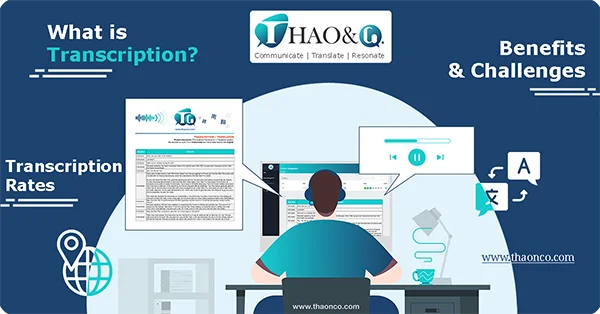
Transcription services play a crucial role in various industries, most notable of which are medical, legal, and commercial. Common transcription services include:
Interview Transcription: Transcription is often used in job interviews or interviews with celebrities to collect information accurately and comprehensively.
Meeting Transcription: Important meetings such as shareholder meetings, delegate meetings, and contract signings are often recorded and transcribed to compose meeting minutes, ensuring transparency and clarity.
Conference and Webinar Transcription: Transcription helps compile the knowledge, technology, and innovations exchanged in webinars and seminars into comprehensive resources for future reference.
Market Research Transcription: Focus Group Discussions (FGD) or In-depth Interviews (IDI) in market research activities often require transcription to easily archive and utilize data, enhancing research efficiency.
Medical Transcription: Transcription service is required in consultations, professional meetings, diagnosis, or doctor-patient discussions by maintaining thorough records of clinical information in text format. Medical conferences and medical seminars also require transcribers to ensure accurate documentation of information.
Legal Transcription: Audio and video materials acquired during investigations or presented to the court must be meticulously documented for record-keeping and later retrieval in subsequent legal procedures if needed.
Academic Transcription: Transcription service helps students, scholars, and educational organizations easily obtain quality reference materials from interviews, lectures, presentations, and science seminars in various languages.
Journalism Transcriptions: Press conferences, media interviews, product launches, and other media events often require precise transcription to store and provide material for content writing as well as information updates to a wide audience/customers.
Business Transcription: Business events such as negotiations, partner collaboration discussions, and internal meetings, may require the content to be transcribed to ensure integrity and transparency.
Personal Transcription: You can also request transcription services for personal purposes, such as transcribing recorded phone calls, voice mail, podcasts, etc. to meet specific needs.
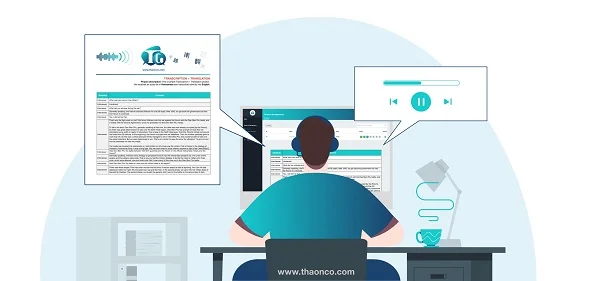
Transcription is divided into various methods suitable for use in different scenarios. Before searching “transcription services near me“, it is best to consider the following information to get an overview and choose the appropriate type of transcription:
Audio transcription is the process of converting audio materials into text format. These audio files can be podcasts, voice memos, or interview recordings. Audio transcription is commonly used in research, education, business, media, and legal fields.
The rise of the Internet and social media has resulted in the growing popularity of content videos that are utilized for numerous purposes. Video transcription is essential for converting video content into written form, often including detailed timestamps. This process provides valuable materials for post-production tasks such as subtitling, dubbing, and further content development.
Video transcription can be applied to various industries, such as:
Verbatim transcription involves accurately and faithfully capturing every sound made, including fillers and stutters, regional accents, and emotional states of speech. Verbatim transcription is required when the tone and emotional context of the speaker are as important as the content itself. This method is suitable for market research, legal issues, and more.
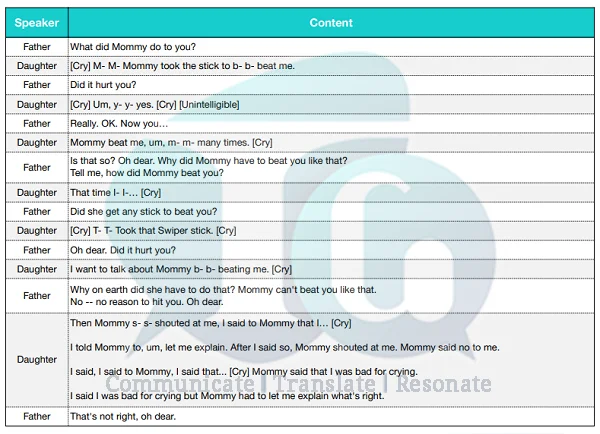
Unlike verbatim transcription, non-verbatim transcription involves transcribing the complete spoken words while omitting fillers, stutters, and correcting pronunciation errors to provide a clear, readable, and seamless transcript. In many cases, businesses even require brief non-verbatim transcription which summarizes spoken content, eliminating minor elements that do not affect the core message.
This type of transcription is often used to focus on the content of the communication rather than tone, providing a better reading experience. The verbatim transcription service is suitable for meetings, interviews, seminars, lectures, etc.
In many cases, transcripts need to indicate time markers for each speech segment, as well as speaker labels. Transcription with timestamps and speaker labels is often required when creating subtitles for videos.
This format is also widely used in court sessions or professional meetings to accurately record the timing, speakers, and content of the exchange. Depending on the client’s request, translation agencies can create standard text transcripts or subtitle files for easy integration into videos, such as SRT – a common subtitle format supported on platforms like YouTube and Vimeo.
Transcription is an effective way to archive and share information. You might wonder why transcription still plays a crucial role despite the advanced video and audio recording technologies available today.
The first benefit is that text files are much smaller compared to video or audio files, making it convenient for sharing and archiving documents. Text files also facilitate flexible information review and reading speeds.
For instance, when you need to revise or extract content from an hours-long meeting to compose meeting minutes, text files make it easier to locate the content you want to read as opposed to video or audio, which ultimately saves time and effort in the documentation process.
Furthermore, transcription provides significant benefits for market research activities, especially in understanding consumer language. A seamless transcript helps mitigate the risk of overlooking information and improves research efficiency. It also serves as a valuable reference material for understanding consumer language usage, and how consumers describe related products. This information enables businesses to develop outstanding content localization strategies and earn the trust of their target customers.
Transcriptions are also potent support tools for post-production processes, such as translation, multilingual subtitling, or dubbing for videos and audio. With the advancement of technology, people have various ways to access content, which means businesses need to create multimedia and multilingual content to attract and broaden their customer base. This underscores the crucial role of transcription in converting all content into plain text, which in turn can be flexibly used for various purposes.
Transcription is sometimes a mandatory requirement in many situations. This is especially true in the legal field where court hearings often require transcribers to create detailed records of all exchanged information and court decisions to facilitate legal procedures, dispute resolution, or subsequent verdict enforcement.
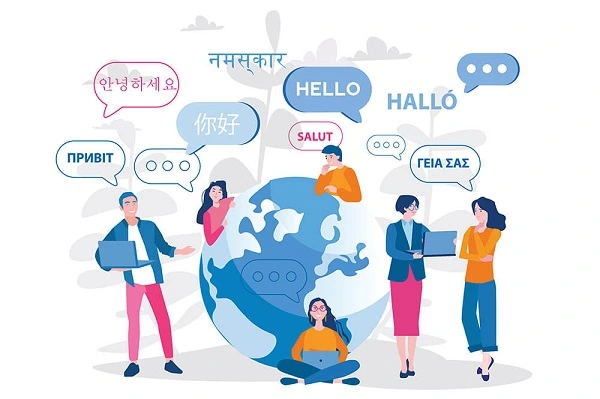
Despite the seemingly simple concept of transcription, there are significant challenges that transcribers need to overcome:
Transcribers need to fully comprehend and accurately convert spoken content into text. Some languages have complex pronunciation rules that require a high level of proficiency to understand the specific context and provide accurate transcriptions.
In Korean, there are rules for sound changes and linking sounds that may lead to errors during transcription. For instance, the word “대학로” is the name of a famous street in Seoul, and the transliteration of each character is “dae-hak-ro.” However, when pronounced together, it is read as “dae-hang-no.”
Another example is in the Japanese language, where a single word like “情” can be read in different ways. When it’s part of the word “情け,” it is read as “nasake” (compassion), but when it’s part of the word “情報,” in On’yomi reading, is pronounced as “jōhō” (information). Transcribers with a poor understanding of the language they are transcribing and the specific context can result in inaccurate transcriptions, affecting the usability of the transcript afterward.
In most cases, transcription services involve a substantial amount of extensive industry knowledge. Transcribers need experience in the relevant field to seamlessly transcribe specialized concepts and terminology.
For example, in the medical field, the Ear-Nose-Throat Department is often abbreviated as ENT in English, but it also has a medical term, Otorhinolaryngology, with complex pronunciation. Moreover, different body parts are often referred to in medical terms, such as “Oculus” for the eye, “Nasus” for the nose, “Oris” for the mouth, “Thorcis” for the chest, and “Anterbrachium” for the forearm. Inexperienced transcribers may struggle with these specialized terms, making the transcription process challenging.
One of the common challenges in transcription is dealing with uncommon regional dialects. Apart from the standard pronunciation and writing, a language may have numerous regional dialects with their own unique vocabulary and accents that reflect the diversity and rich culture of the language.
Thao & Co. had an interesting experience in a transcription project that involved converting a Vietnamese audio interview to English. In particular, the person interviewed in the audio was a veteran from the central province of Nghe An. The regional dialect of Nghe An province is so distinctive that even native Vietnamese speakers sometimes struggle to understand it. We had to consult various sources, converse with people from Nghe An, and even make educated guesses to understand the content of this veteran’s speech and then translate it into English. Despite some difficulties, our experience and solid language skills allowed us to deliver a quality translation to the client on time.
Other factors that pose challenges in transcription include background noise from the surrounding environment. Except for cases with well-recorded audio, background noise can be found in most audio files, requiring translation agencies to take measures like noise-cancellation filters and volume normalization during the transcription process to maximize clarity.
However, these audio filtering technologies cannot handle special factors such as when the speech quality is affected by the speaker’s emotional state. In such cases, transcribers need extensive skills and experience to deftly handle each situation.
In many cases, especially in legal transcription, it’s crucial to ensure the precise and objective transcription of exchanged content. It is advisable for transcribers not to let their personal opinions or emotions influence the transcription, as this can lead to misinformation.
Moreover, when transcribing into another language, it can be challenging for clients to independently verify the accuracy of the transcript. To address this, many translation agencies may dedicate a proofreader to enhance the accuracy and objectivity of the transcript.

The emergence of ASR and NLP technologies has attracted strong interest worldwide. ASR – Automatic Speech Recognition operates by analyzing phonemes to construct individual words and complete sentences. An advancement of ASR is NLP – Natural Language Processing, which allows users to directly communicate with their devices. One prominent application of NLP technology is Apple’s digital assistant, Siri.
It is undeniable that these cutting-edge technologies offer advantages such as speed, convenience, and cost-efficiency. However, many users believe that ASR systems still have limitations and are not suitable for important purposes. With principles of operation based on phoneme analysis, these technologies may struggle with regional dialects or unclear speech. ASR also cannot provide verbatim transcripts because if the words are not spoken seamlessly, the software will produce results with very low accuracy.
In ordinary communication, people rarely speak smoothly or pronounce every word distinctly throughout the entire conversation. Machines can only rely on available data and are passive in making appropriate adjustments. When using ASR for crucial purposes like court transcription, business meetings, interviews, or medical consultations, an additional proofreading step by humans might be required. This step often needs more time and effort compared to recruiting a professional transcriber. Therefore, human transcription remains vital in the modern era of technology.
The most significant advantage of human transcription is its flexibility and ability to make judgments. Humans can capture the content effectively, even when the speaker’s articulation is not seamless or when speech is fast or incoherent. The ability to deal with background noises and make judgments is a crucial transcription skill acquired through practical experience and extensive knowledge. Investing in human transcription services should be a top priority, especially when your documents are crucial and highly specialized.
Furthermore, technology companies can also harness the advantages of human transcription to train AI systems and overcome machine limitations in converting speech into text. Specifically, human-generated transcripts can provide an ideal training environment for AI to understand the rhythm, pronunciation, and diverse language nuances similar to human, thus improving their speech recognition accuracy and optimization.

The rate of transcription services depends on various factors, including:
It is advisable to seek translation agencies that provide detailed and transparent quotes before ordering services to ensure that your transcription project is done smoothly and professionally. For personalized consultation and a detailed quote on Thao & Co.’s transcription services, please visit our Get a Quote page today.
When looking for transcription and translation services, it is best to consider taking into account the agency’s reputation, processes, and presence of a team of professionals. This is often reflected through case studies, client reviews, and working processes available for view on the company’s official website, or other platforms.
Are you struggling with continuously poor results from automated transcription tools? Thao & Co. can help ensure the utmost accuracy and confidentiality of all your documents.
At Thao & Co., each transcription is carried out by humans. Our team of linguists commits to providing you with quality and comprehensive transcriptions in various fields, including medical, educational, legal, entertainment, marketing, and more.
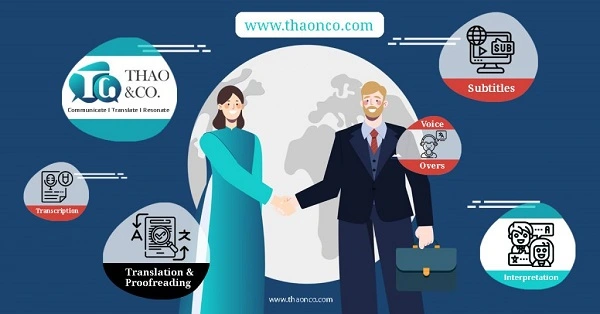
We have built a strict quality control process that includes two stages of proofreading, information verification, and careful terminology research. With our robust access restriction regulations and Non-Disclosure Agreement (ADA), you can rest assured that every project-related information will be adequately secured.
Please leave your project details on our Get a Quote page, our team will contact you for consultation within 24 hours.